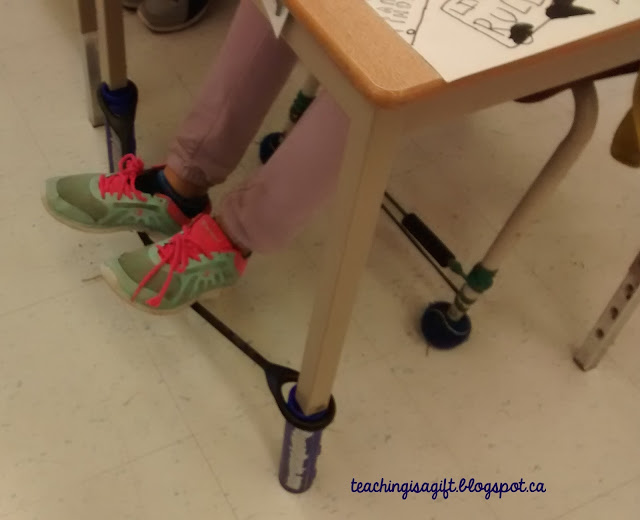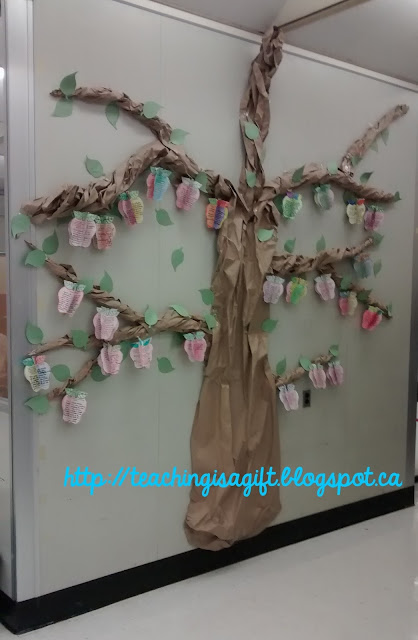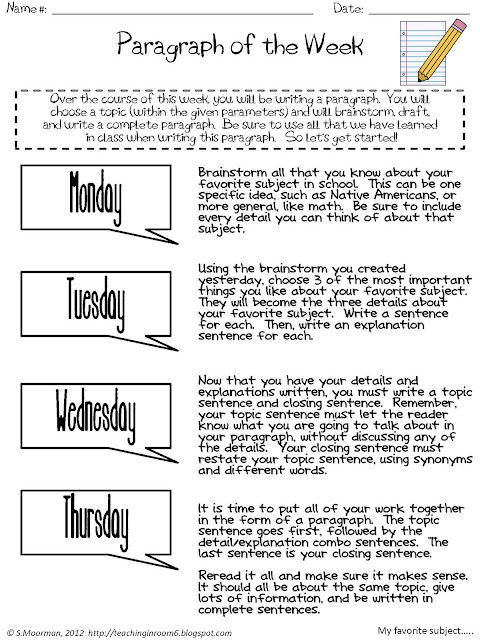Some days I find it hard to believe that I have been teaching for almost 25 years. Things have changed a LOT in that time. I am also amazed at all the great things we can add to our repertoire to assist the students in our classrooms. The past few years I started using Therabands around the chair legs to help students who need to move a lot. I am a certified Pilates instructor and I had an extra Theraband roll so I tried it out....similar to the picture below.
That only lasted a short while for students who were active leg movers. The bands quickly wore out and had to be disposed of. Last year, I was at a local dollar store and saw some resistance bands which I thought might work better. I put one on every chair in my classroom and my students loved it. Having the bands on the chair legs allowed those who needed to move a way to get out excess energy without disturbing myself or others in the classroom. You can see the resistance bands on the front legs of this student's chair.
The resistance bands are great, but over time they break and have to be fixed (short term) or replaced. As I have purchased these items with my own money, this is not a cost effective option in the long run.
Enter Bouncy Bands.
Scott Ertl the creator of the Bouncy Bands was kind enough to send me a few samples to try out in my classroom. Scott Ertl is an elementary school counselor in Winston-Salem, North Carolina. He created Bouncy Bands to help students at his own school to have a way to move when they worked so they wouldn't have to stay trapped at their desks for 5-6 hours a day. He wanted to help them be able to stretch their legs, bounce their feet and prop up their feet instead of having them dangle all day from their chair.
I chose to put the bands on the desks of the students who seemed to benefit the most from the resistance bands. I asked the students to try out the Bouncy Bands and give me feedback at the end of the week. The students said that they liked that the bands allowed them to "bounce" their feet, rather than push against the resistance bands. I felt that adding the Bouncy Bands to the desk legs would allow students the choice of bouncing their feet, or pushing against the resistance bands. There was no clear winner for the students, but for me, I felt that the durability and therefore longevity of the Bouncy Bands would make them superior in the long run. I would love to be able to raise enough funds to purchase a classroom set of the Bouncy Bands which go on the chair legs. These would be similar to what I have created with the resistance bands, but much more durable.
If you live in the U.S. you can apply for classroom funding to purchase Bouncy Bands through Donor's Choose. Scott has included more information about filling out a Donor's Choose application here. I wish there was something like this for Canadian teachers as well!
If you decide you would like to purchase some Bouncy Bands for your classroom you can use code "15OFF" at checkout.












































